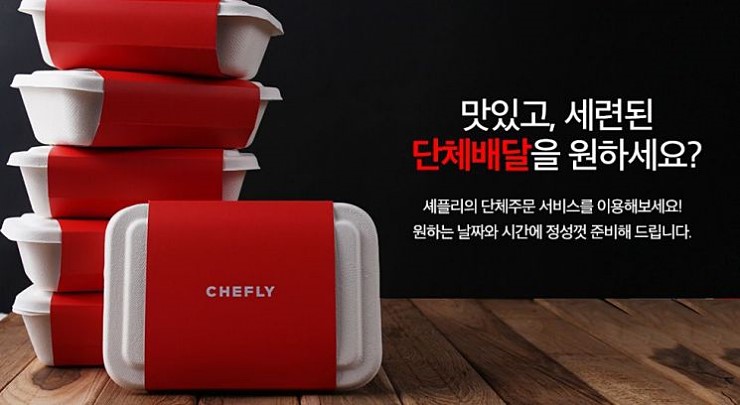The way we live is constantly evolving and with it comes changes to the services we need to suit our lifestyle changes. The 4th industrial revolution has brought about changes to our delivery systems with everything we need readily available at the touch of a finger. All around the world, prominent all-encompassing delivery programs are popping up addressing these new consumer needs. For example, India’s Swiggy, internationally renowned driver program Uber and Germany’s FoodPanda. In fact, the food service industry has seen the most development in the home delivery field. The rise in food service delivery has also resulted in the formation of new restaurant options in the United States of America (USA) and Canada called ghost restaurants.
A ghost restaurant is delivery or take out only facility. They do not provide sit down service. When an order is placed, the ghost restaurant makes the food for pick up by the customer or by a delivery service, who in turn takes it to the customer. Ghost restaurants have contracts with several delivery companies to keep their customers satisfied. For example, a famous ghost restaurant in Canada called ‘Sammy’s Hot Mess’ uses 2 delivery companies, while ‘Nikos’ uses 5. Some ghost restaurants have their own delivery system, like the New York-based company, Maple.
 |
| ▲ Ghost restaurant's conceptual diagram. This picture shows how the ghost restaurant is organized. (Photo by Sitebuilder Report) |
Ghost restaurants are hugely popular in Canada increasing the need for delivery services in the process. According to Statistics Canada (Canada’s national statistical agency), delivery systems are developing fast as well as all the foodservice industry developed. The whole Canada online restaurant industry (both app-based delivery system and restaurant delivery system) reached US $14.68 billion. And especially, restaurant delivery accounted for approximately US $1.17 billion, representing 80% of the overall online food delivery market. However, over the past three years, app-based delivery services (66.7 percent) outperformed restaurant delivery services (59.2 percent), proving once again the power of app-based delivery services; app-based delivery services deliver their all partnership restaurants food while original restaurant delivers their own.
 |
| ▲ The symbol of delivery food in Canada, corrugated cardboard box decorated with the national flag of Canada. (Photo by Kostyantine Pankin) |
Problems in the food service industry are being blamed for the growth discrepancy. Expenses such as labor, price of ingredients and so forth have all impacted the costs of dine-in restaurant eating. The price of ingredients has risen because of diverse factors including retaliatory tariffs on American steel, which took effect on July 1. Furthermore, major retailers, including Loblaws and Walmart, said the 10 to 20 percent increase in transportation costs from rising oil prices, would have to be passed on to consumers. All of these factors have encouraged the development of ‘Ghost Restaurants’ as a reasonable alternative to running expensive eat-in restaurants.
The initial expense for a ghost restaurant platform is lower than other food management businesses. A restauranteur merely needs kitchen space, kitchen staff and an idea for a business. No waiters or dining square footage are required to operate a ghost restaurant. Location is also not nearly as important. Korean-American star chef, David Chang, opened a new restaurant called ‘Ando’, which has no sit down locations. When customers order through the Ando website or by their phone application, chefs make the dish and deliver it using ‘Uber Rush’, the delivery agency. Most of the worries a restauranteur normally faces when opening a new location are non-existent with this type of food service. What’s more is that it’s easier for ghost restaurants to flexibly cope with the changing tastes of consumers.
This kind of restaurant can offer diverse menus and quickly respond as consumers react. New York’s famous ghost restaurant, Green Summit Group’s CEO Schatzberg used to sell Central Asian food, but soon after changed to salads. He said that customers were really not interested in his original menu, so the change was necessary to stay relevant. In a phone interview with the fast food company, Schatzberg mentioned that unlike other ordinary restaurants which loose more than 800,000 dollars a year trying out new menus, ghost restaurants only loose about 25,000 dollars, a much more affordable expense. In addition, with ghost restaurants, it is possible to run several restaurant brands out of one kitchen. ‘Green Summit Group’ recently launched 9 restaurants out of the same location with different names in Chicago. Each one has a different menu. These 9 restaurants are all registered with the delivery application ‘GrubHub’, so customers can order from any of the menus with just a few clicks.
Moreover, marketing expenses are reduced with this type of restaurant platform. For instance, one of the delivery companies used Yelp to recommend the ghost restaurant as hot and new business. These ghost restaurants use well-known delivery companies and applications, so CEOs don’t have to concern themselves with advertising and the extra costs associated with it. Delivery applications make menu suggestions and offer recommendations for the restaurants, so promotion is less necessary than before.
Ghost restaurants also offer extended operating hours because there is no service time limit. Customers can order from their menus until late helping them earn more money with less overhead costs. In the magazine Food and Beverage News, one ghost restaurant customer in Canada said the late-night meal delivery service is one of the main reasons for the industry’s popularity. Most of Canada’s ghost restaurants, like Boxer’s Chicken and Bully Sandwiches, are open until 12 A.M. and Sammy’s Hot Mess is open until 2 A.M, while most traditional restaurants close around 9 to 10 P.M. Among the foodservice industry, ghost restaurants are expected to expand the scope of the market. Eastern Canada’s biggest ghost restaurant chain called Dekotas Group is planning to expand in the west.
According to Kotra (Korea Trade-Investment Promotion Agency), the foodservice industry suffered the most from the minimum wage increase which was also the case in Canada. With Korea’s minimum wage set to increase by about 29% in 2 years, the local foodservice industry is paying attention to the rise of ghost restaurants because they operate with less overhead and do not require as much investment as traditional ones. In an article in Asia Economy, a foodservice industry spokesperson said that ghost restaurants are gaining in popularity “and more trades are paying attention to it.” The trend is also on the rise in Korea. ‘Chefly Kitchen’ opened an online restaurant in collaboration with ‘Foodfly’ a local meal delivery service. The restaurant opened in July 2016 and offers food options from around the world. It is considered Korea’s benchmark ghost restaurant. Customers can order from the menu through their partner online delivery service.
 |
| ▲ Korea's representative ghost restaurant Chefly Kitchen (Photo by FoodFly) |
Ghost restaurants are a new and previously unimaginable foodservice industry model. They only became possible with the rise of food delivery services. Consumers are welcoming these changes while restauranteurs are happily earning more money. Chefly Kitchen doubled their income after they switched to being a ghost restaurant. Famous ghost restaurant company Green Summit earned a record $18 million dollars last year. As a result, the companies are planning to expand their businesses and new companies and entrepreneurs are thinking about launching their own ghost restaurants. With customers welcoming the service and the ever rapid development of technology, ghost restaurants have a bright future ahead.
신지희, 김동은, 김민 dankookherald@gmail.com

![[Campus Magnifier] Let's Surf the Library!](/news/photo/202404/12496_1765_4143.jpg) [Campus Magnifier] Let's Surf the Library!
[Campus Magnifier] Let's Surf the Library!
![[Campus Magnifier] Let's Surf the Library!](/news/thumbnail/202404/12496_1765_4143_v150.jpg)





